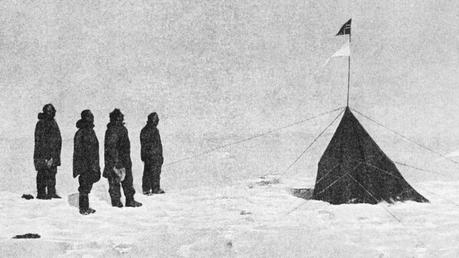 New research published in the Bulletin of the American Meteorological Society reveals that an unusually warm summer in the Antarctic back in 1911-1912 may have played a major role in deciding the fate of two teams of explorers. The study took a look at historic records for weather in the Antarctic starting in 1905 and moving forward to the present, with researchers considering the impact of that weather on expeditions to the Antarctic for the first time.
New research published in the Bulletin of the American Meteorological Society reveals that an unusually warm summer in the Antarctic back in 1911-1912 may have played a major role in deciding the fate of two teams of explorers. The study took a look at historic records for weather in the Antarctic starting in 1905 and moving forward to the present, with researchers considering the impact of that weather on expeditions to the Antarctic for the first time.In 1911, Norwegian polar explorer Roald Amundsen was locked in a fierce battle with his British rival Robert Falcon Scott to see who would become the first person to reach the South Pole, a place at that time that has remained far out of reach. Ultimately, Amundsen would win that race, arriving at 90ºS on December 14. Scott would also reach the Pole, but he didn't arrive until 34 days later.
But after their respective dashes to the Pole, the story takes a very different term for these two explorers. Amundsen returned to the coast, boarded his waiting ship, and sailed back to Europe a hero. Meanwhile, the weather took a turn for the worse and Scott and his men ended up perishing on their march back to the Antarctic coast.
At the turn of the 20th century, it was unusual for high pressure weather fronts to reach the Antarctic. Instead, low pressure systems were common, creating westerly winds that keep the continent cooler. As the ozone layer above Antarctica has thinned in recent years, those fronts have become even more common. But back in 1911, a high pressure system moved onto the continent, creating ideal conditions for both Amundsen and Scott. This was the weather window they needed to safely reach the South Pole at long last.
Unfortunately, the weather pattern didn't last, but because he had a head start, Amundsen was able to get to the Pole and back before the conditions on the frozen continent deteriorated completely. Scott wasn't so lucky, and as a result he and his men were left stranded as the Antarctic cold and storms returned with a fury.
Obviously there are a lot of other variables that played a role in these fateful expeditions. Amundsen and Scott were two very different men with very different leadership roles. But, it seems that the weather was a big part of both the success and failure of the two expeditions as well.
Read more about this topic here.

